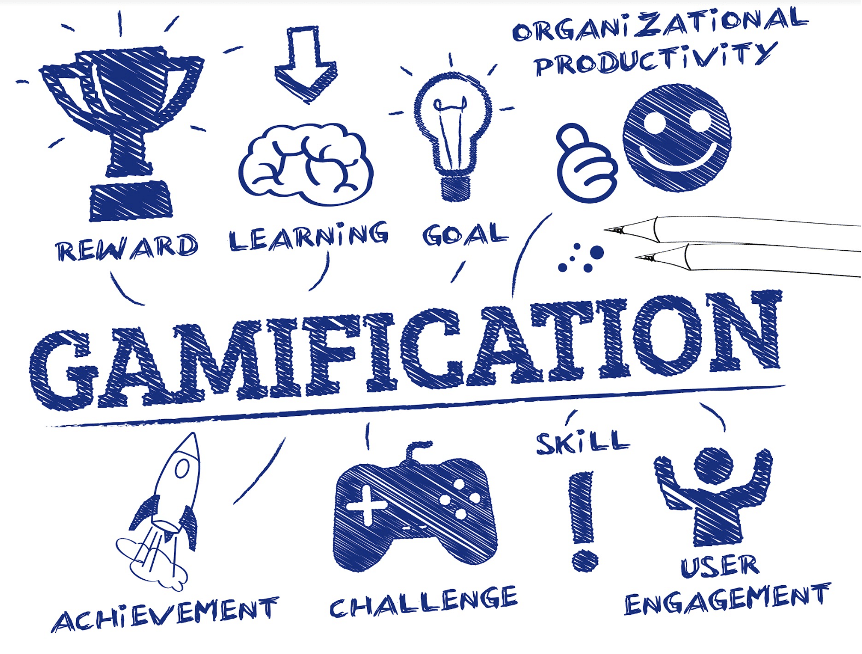Have you ever wished that learning felt less like a chore and more like an adventure? Imagine tackling complex topics with the same enthusiasm you reserve for your favorite video game. That’s precisely what gamified learning aims to achieve – transforming education from a passive activity into an interactive and engaging experience.
At its core, gamification in education involves incorporating elements commonly found in games into educational contexts. Think points, badges, leaderboards, challenges, and even storylines. These elements tap into our innate desire for competition, achievement, and social interaction, making learning more enjoyable and memorable.
Picture this: instead of staring at a textbook filled with dense paragraphs, you’re navigating a virtual world, solving puzzles to unlock new information, and collaborating with classmates to complete quests. The concepts become tangible, interactive, and even thrilling!
But gamified learning is more than just superficial fun. Research has shown that incorporating game mechanics can significantly enhance various aspects of the learning process:
- Motivation: Games are inherently motivating. They provide instant feedback, clear goals, and a sense of progress, keeping learners engaged and eager to continue.
- Engagement: Gamified learning captures attention and fosters active participation. Learners are no longer passive recipients of information; they actively solve problems, make decisions, and explore concepts in a hands-on manner.

- Retention: By making learning fun and interactive, gamification helps learners retain information more effectively. The immersive nature of games creates lasting memories and strengthens neural connections associated with the learned material.
- Collaboration: Many games encourage teamwork and social interaction, which are essential skills in today’s world. Gamified learning platforms often incorporate features that allow learners to collaborate on projects, share ideas, and learn from each other.
Now, let’s explore some practical examples of how gamification is being implemented in various educational settings:
1. Educational Games:
A plethora of educational games are designed to teach specific subjects or skills in an engaging way. Think about “Minecraft” for learning programming concepts or “Kerbal Space Program” for understanding physics and engineering principles.
CommonLit is a platform that offers free, high-quality literacy resources, including gamified reading comprehension activities.
2. MOOCs with Gamification:
Massive Open Online Courses (MOOCs) like Coursera and edX are increasingly incorporating game mechanics to enhance learner engagement. Points, badges, leaderboards, and even virtual rewards motivate learners to progress through the course material.
3. Classroom Activities:
Teachers can seamlessly integrate gamified elements into traditional classroom activities. Consider using point systems for answering questions correctly, awarding badges for demonstrating specific skills, or setting up friendly competitions to encourage participation.
4. Personalized Learning Platforms:
Some platforms utilize adaptive learning algorithms and gamification to tailor the learning experience to each student’s individual needs and pace.
The key to successful gamified learning lies in thoughtful design and implementation. It’s not simply about adding flashy elements; it’s about strategically incorporating game mechanics that align with learning objectives and enhance the overall educational experience.
Here are some essential considerations for creating effective gamified learning experiences:
- Clear Learning Objectives: Start by defining what you want learners to achieve. The gamification elements should directly support these objectives and provide meaningful incentives for achieving them.
-
Meaningful Challenges: Design challenges that are engaging, thought-provoking, and appropriately challenging for the target audience. Avoid making tasks too easy or frustratingly difficult.
-
Feedback and Progression: Provide regular feedback to learners, allowing them to track their progress and identify areas for improvement. A sense of accomplishment and continuous growth is crucial for maintaining motivation.
-
Variety and Flexibility: Offer a diverse range of game mechanics and activities to keep learners engaged. Experiment with different formats and cater to various learning styles.
-
Authenticity and Context: Connect gamified elements to real-world applications whenever possible. Show learners how the skills they are acquiring through games can be applied in practical situations.
Gamification holds immense potential to revolutionize education by making learning more enjoyable, engaging, and effective. As technology continues to evolve, we can expect even more innovative and immersive gamified learning experiences that will empower learners of all ages to reach their full potential. The future of education is interactive, dynamic, and undeniably fun!







